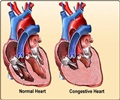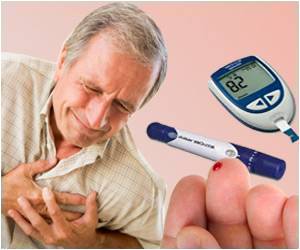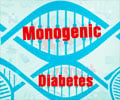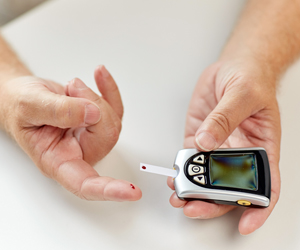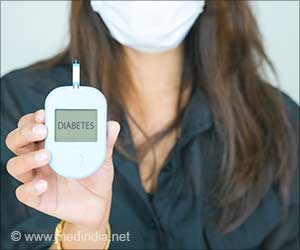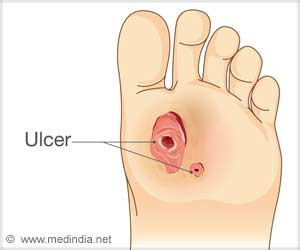
The study assessed the relationship between levels of the marker and mortality outcomes. Researchers found that for heart failure patients with diabetes, for every unit increase in the marker, there was a 15 percent decrease in mortality.
"We were surprised that the optimal level of glycosylated hemoglobin in this patient population with diabetes was higher than levels in current treatment guidelines," said senior author Dr. Tamara Horwich, assistant professor of cardiology, David Geffen School of Medicine at UCLA. "We may find that doctors who treat patients who have both advanced heart failure and diabetes may not need to focus on aggressively lowering blood sugar, but rather keep it under moderate control."
Approximately 25 to 50 percent of patients with heart failure also have diabetes, compared to just 7 percent of the general population. The relation could be due to similar physiologic processes that underlie both conditions such as oxidative stress, patterns of hormonal activity and vascular lining dysfunction that can lead to conditions like atherosclerosis.
For the study, researchers assessed medical records of 845 patients with advanced heart failure, referred to a single university center, the Ahmanson-UCLA Cardiomyopathy Center. Most of the patients (72 percent) were men and the average age was 55.
Patients were classified as having diabetes or not and also grouped by four levels of glycosylated hemoglobin. Using statistical analysis, researchers calculated risk of death or need for an urgent heart transplant.
Advertisement
Researchers found that for diabetic heart failure patients, two-year event-free survival was highest amongst patients with the highest elevated glycosylated hemoglobin levels: 65 percent survival rate for patients with level four (greater than 8.6 percent of the marker) and 61 percent survival rate with level three (7.3 to 8.5 percent of the marker).
Advertisement
According to researchers, the ideal level of glycosylated hemoglobin in heart failure patients with diabetes appeared to be in the 8.3 to 8.9 percent range. Current national treatment targets aim much lower at 7 percent.
In the heart failure patients without diabetes, there was no significant mortality risk difference between the glycosylated hemoglobin levels.
Researchers note that for those without heart failure, having diabetes and elevated glycosylated hemoglobin levels is a risk factor for developing the condition. However, the study shows that if a patient already has heart failure, having higher glycosylated hemoglobin levels may be protective.
The next steps are studies to test the optimal glucose management goals as well as assess the best anti-diabetic medications for heart failure patients with diabetes.
Heart failure affects six million in the United States alone and is caused by weakened heart muscle function that can cause build-up of fluid in the lungs and other organs due to the heart's inability to pump effectively.
Source-Eurekalert

